Choosing cookware that suits your kitchen and cooking style is an important decision. Many of us cook in the kitchen at least once a day, so our pots and pans will get used hundreds of times each year. We’ve created a handy cookware guide so that you can find the best cookware for your home.
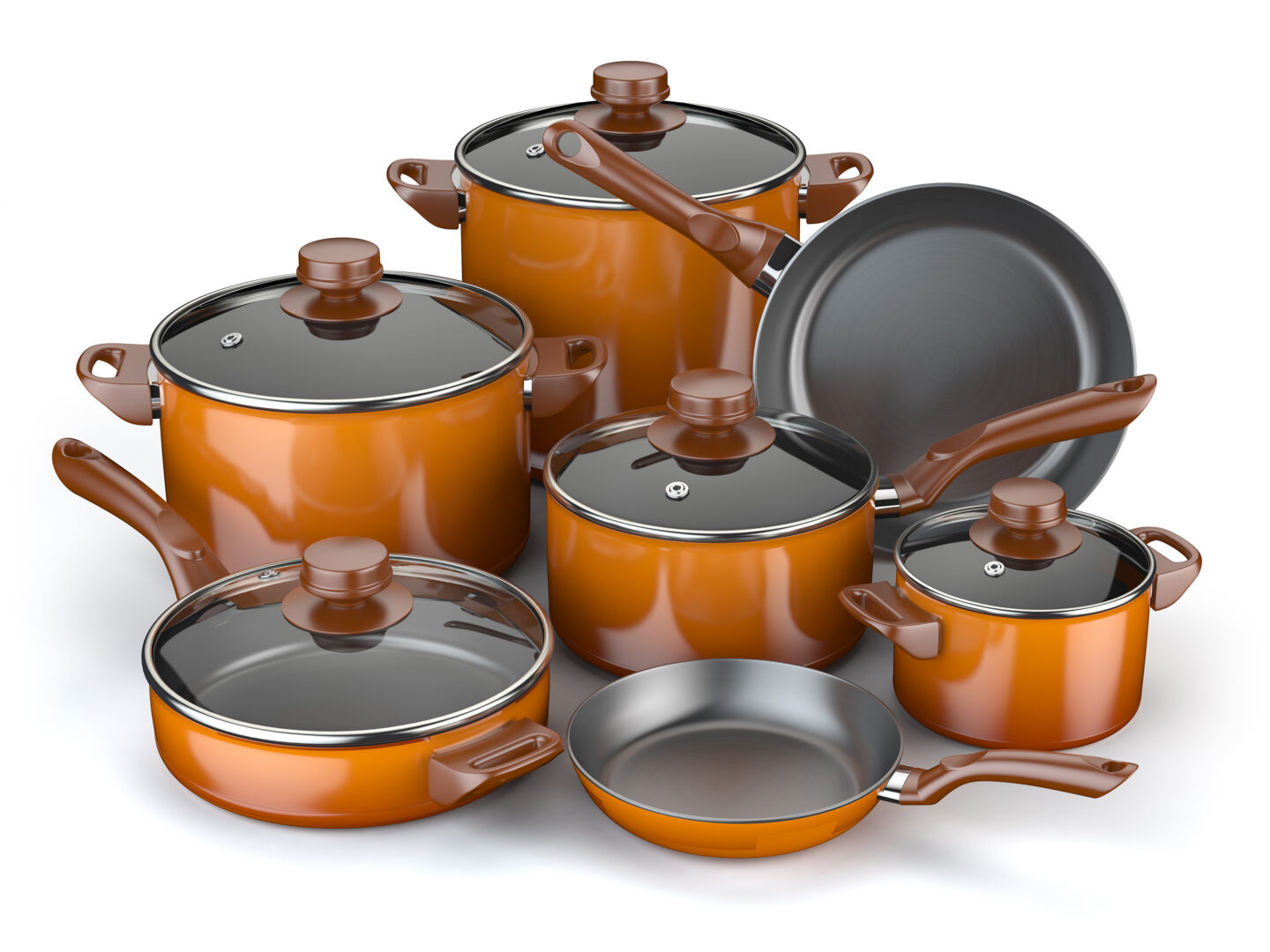
Table of Contents
What to Consider when Buying Cookware
Before buying a cookware set, we recommend checking your existing cookware. Do you already have a decent set of pots and pans but need to replace that wok with a rusted base? Forget buying the set and simply replace the damaged piece.
Budget
It is important to establish a maximum spending limit and then see what you can afford. Don’t put yourself under financial pressure to pay off a kitchen set that is too expensive.
Durability
You’d think everyone would say it is. But is it? If you’re buying for your summer house and the cookware will get used a few times a year, durability doesn’t play such an important role in the decision. Also, if you replace them every year, then a long-lasting, high-quality set may not be needed.
Maintenance
Some pans need more love and care than others. A copper or cast iron skillet will provide great benefits when cooking, but will you remember to oil it? If not, a stainless steel set that requires minimal maintenance might be a better option.
Cooking style
Many of us tend to have a method of cooking that gets used frequently: boiling, searing, slow cooking, or blanching. If you frequently slow cook casseroles because they’re simple to make, choosing copper pots that are unlined might not be in your best interests. Copper can add an unpleasant, bitter flavor when slow cooking. Do you love to fry food? Consider cast iron for evenly distributed heat that results in delicious fried food.
Appearance
Cookware is used every day by most of us, so looks count. If you have a large traditional homestead kitchen, then copper that gets hung from hooks has great eye appeal. Are you living in a funky new apartment and want to impress your guests with molecular gastronomy? Add some bright-colored pots to reinforce your creative flare.
Cooktop type
Magnetic cookware is a good choice if you have an induction cooktop.
Types of Cookware
Do you know a pot from a pan? How about a sauté pan from a saucier? Find out how different cookware types can be used in your kitchen.
Braiser
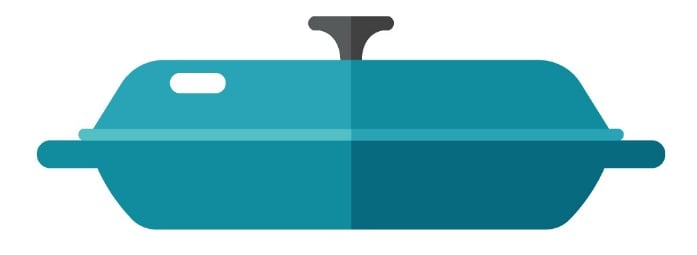
A shallow-sided, wide pan with a heavy base and a lid that fits securely. An excellent pan for searing substantial pieces of meat. Ideal for steaming (braising) food in the oven at a low temperature as well as frying or even using for casseroles.
Deep Skillet
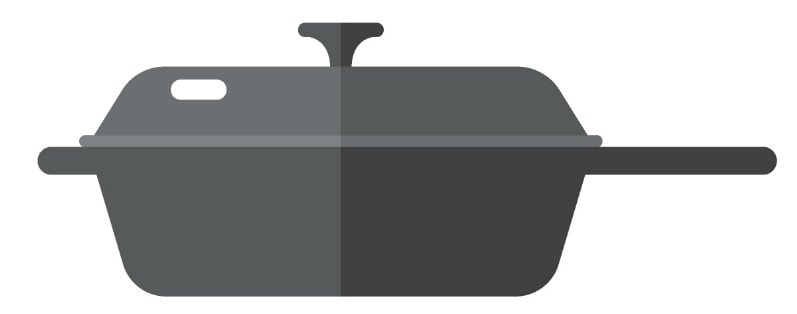
A deep skillet is similar to a traditional skillet, only it’s deeper. This pan is ideal for frying, roasting, baking, or stewing. It is a versatile piece of equipment that can be used for most cooking techniques.
Frying Pan
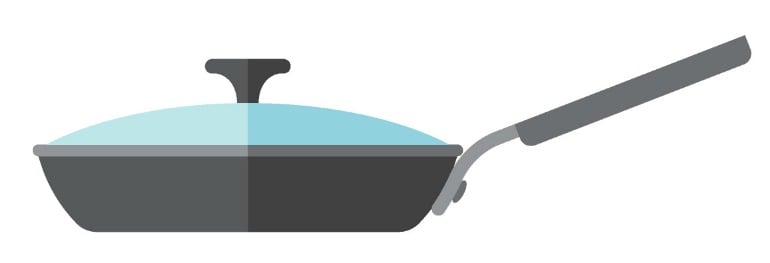
One of the most common pieces of equipment in many homes, frying pans are the go-to tool for many recipes. They are shallow with long handles and are useful for keeping hands at a safe distance when frying food in hot oil.
French Skillet

A French skillet is best used to sauté and brown food rather than fry it at high heat. Although it is similar to a frying pan, the French skillet does a better job of keeping pan liquids from splashing out.
Wok
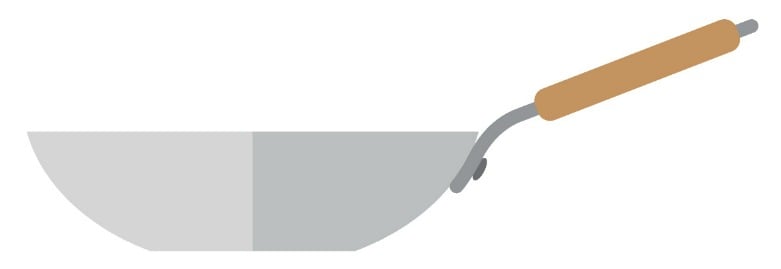
A wok is a large, bowl-shaped pan that originated in China and is now a popular kitchen tool in many parts of the world. It can have a flat bottom or a rounded one, which requires a special stand.
Grill Pan

A grill pan is a shallow pan with ridges to give your food that outdoor grilled look. The ridges allow the fat to escape so that the meat doesn’t cook in its own juices. This is the optimal tool for an indoor barbecue.
Saucepan
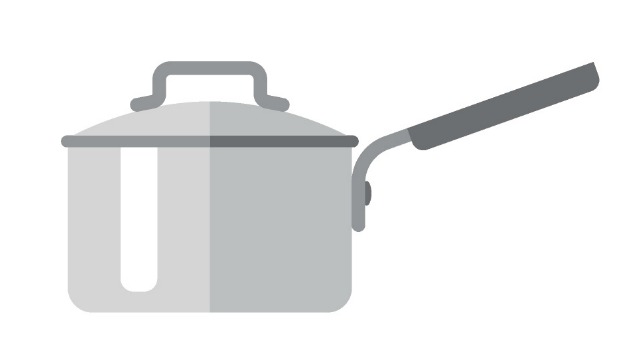
A common pot that most households use. The saucepan has a long handle and is deep with vertical sides; it is designed for braising, boiling, and making soups or sauces. Be sure to check out our guide to making sauces.
Saucier
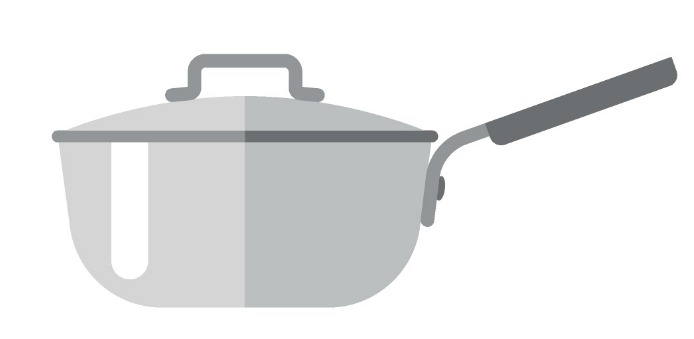
A saucier’s main purpose is to reduce sauces, although it’s also good for risotto, porridge, and lots more. It is a saucepan with a wider mouth, walls angling outward, and a rolled lip. The design of a saucier makes stirring liquids a little easier than in a saucepan.
Saute Pan
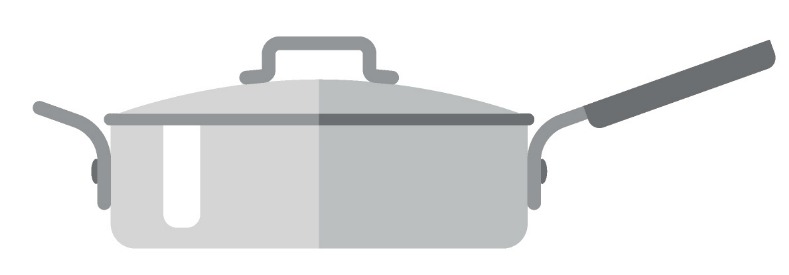
A saute pan has a flat bottom with vertical sides. It is similar to a frying pan but offers more surface area and volume than a similar-sized frying pan.
French Oven
A French oven or Dutch oven will offer versatility. It allows the user to cook on the stovetop, then transfer to the oven. Once the dish is ready, it can be transferred straight to the table. French ovens are a useful option for slow-cooking soups, meat, and casseroles.
Stock Pot
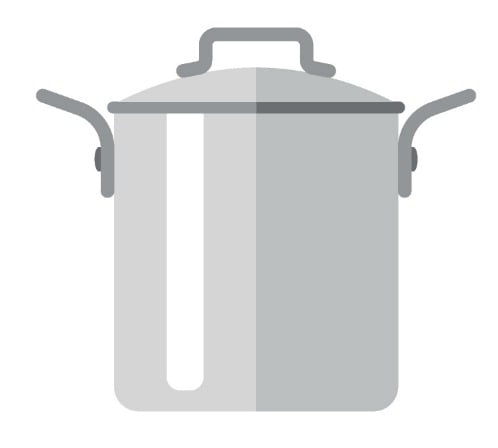
A stockpot is a large, high-walled pot ideal for cooking soup, stock, and broth. They’re designed to heat quickly and transfer heat evenly for prolonged periods of time when simmering.
Soup Pot
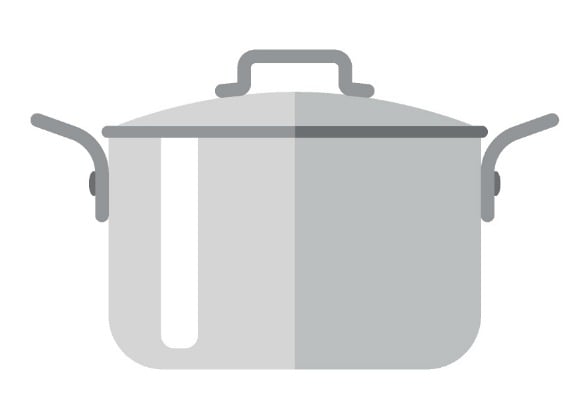
A soup pot is very similar to a stockpot; however, its walls are not as high. As the name suggests, it is designed for slowly cooking soups that can then be transferred straight to the table and ladled out into each bowl.
Roasting Pan
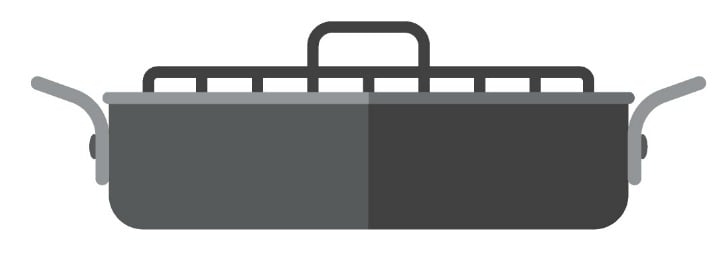
A roasting pan is designed to fit large cuts of meat for roasting in the oven. They often come with a rack that allows the meat fat to drip through.
Double Boiler
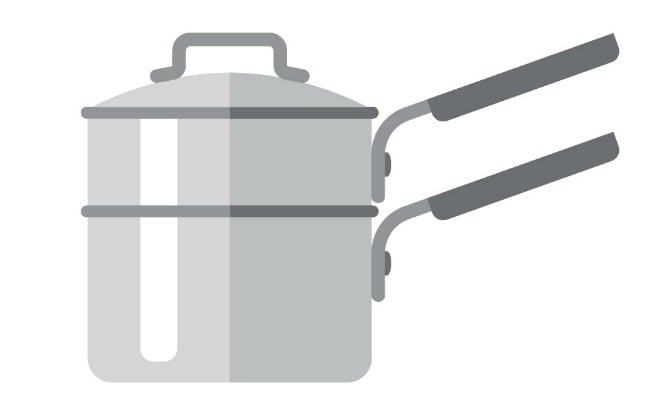
A double boiler (Bain-Marie) has two pots; the lower is filled with water and boiled over the stovetop. An upper pot contains food that can be heated with less harsh heat. It is great for melting chocolate!
Interesting reading:
What are the top pastry boards?
What are the top cookie presses?
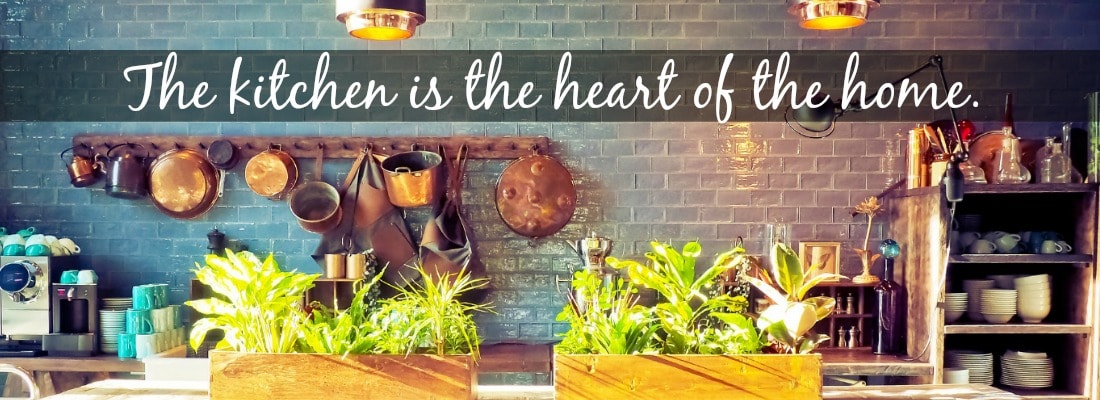
What is the Best Cookware Material?
Choosing the right material for your pots and pans is one of the biggest decisions you need to make. Check out our comparison guide of copper, cast iron, stainless steel, carbon steel, glass, non-stick, enamel, and silicone cooking sets.
Copper
Let’s start our review of cookware materials with the best. Nothing beats copper in the looks department, and it will demand a prominent position in your kitchen.
Copper cookware isn’t just about appearance, though. It is excellent for conducting heat, and if you’re serious about cooking, you should put this option on your shortlist.
Some people consider copper dangerous to use when cooking due to its toxicity. But most modern copper pots and pans are lined with food-safe metals such as tin, so you don’t have to worry.
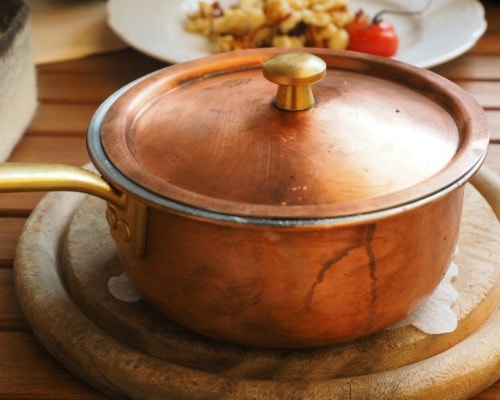
What you should consider
Price Factor: Very high
Safe for: Oven and stovetop
The Good
- Amazing at conducting heat
- Looks stunning in the kitchen
- Minimal pre-heating required
Potential pitfalls
- High maintenance to keep the shine
- Expensive for those on a budget
- Not compatible with induction cooktops
Cast Iron
Cast-iron cookware is versatile. It’s at home on a stovetop, in the oven, or even thrust over a harsh open fire. Nothing phases cast iron, so long as it is maintained regularly.
A big complaint about cast iron is that it rusts and chips over time. However, a little oil rubbing followed by some heat will create a layer of protection that’ll keep your cookware in top shape. A well-maintained cast iron pan will provide its owner with a trouble-free cooking surface.
Tip: Enameled cast iron is a good option if you want a solid type of pan that doesn’t require maintenance.
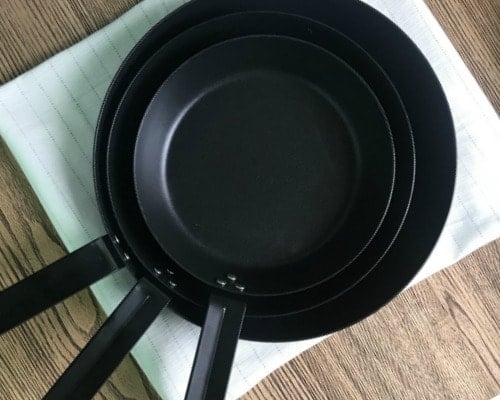
What you should consider
Price Factor: Relatively cheap, excellent value.
Safe for: Oven, stovetop, fire, grill.
The Good
- Can be used anywhere, from stove to fire
- Tough and hard to damage
- Once seasoned, it is non-stick
- Excellent for searing meat
Potential pitfalls
- Can crack or develop rust without maintenance
- Requires effort to heat pans evenly
- Not dishwasher-safe
- Acidic foods can react with cast iron
Stainless Steel
Stainless steel cookware is a solid contender in the kitchen. It is durable and will allow you to sear, blanch, and fry for decades if treated well.
An important feature to look for is whether your pots and pans will have an encapsulated base. This offers a layer of other material between two sheets of stainless steel. An encapsulated surface conducts heat much better and will improve your cooking. The heat conductivity of an all-stainless steel set won’t be as effective, and they are usually the cheapest option for good reason.
Stainless steel looks good and doesn’t require the regular oiling that some other cooking sets require. If you want quality cookware without any tedious maintenance, then it’s a good option.
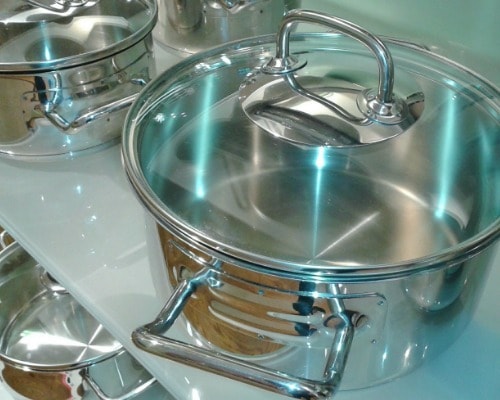
What you should consider
Price Factor: From cheap to mid-range
Safe for: Oven or stovetop
The Good
- Cheaper than copper
- Non-reactive material
- Tough and easy maintenance
- Rust resistant
Potential pitfalls
- Doesn’t conduct heat as well as copper
- Doesn’t cope well frying some food like eggs
- Sets without an encapsulated base can lack quality
Carbon Steel
Like a good wine, carbon steel tends to get better with age. Seasoning your pans with oil regularly will bring out the best in them.
Carbon steel is a lot like cast iron, except that they’re lighter and usually have a non-stick coating. This is because carbon steel is made up of approximately 99% iron and 1% steel. A good combination for making excellent cookware.
The extra benefits offered by carbon steel do come with a price tag though. Expect to pay up to double the price of cast iron cookware.
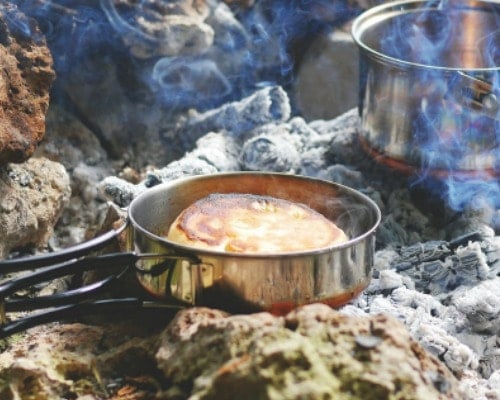
What you should consider
Price Factor: Mid-range
Safe for: Oven and stovetop
The Good
- Lighter than cast iron
- Can take high heat
- An efficient heat conductor
- Durable, long-lasting
Potential pitfalls
- Requires maintenance
- Can develop rust and chips
- Can react to highly acidic and alkaline food
Glass
Glass is a handy type of material for those cooks who enjoy oven baking. Pies and casseroles are ideal matches for glass bakeware. The beauty of cooking with glass is that you can see the layers of food, making it easier to decide when the meal is cooked.
Dishes made from glass take a little longer to heat up than those made from metal. On the flip side, they take longer to cool down, so your meal will stay warm for longer.
Keep in mind that most glass cookware doesn’t handle extreme heat well and is prone to cracking if you boil water in it.
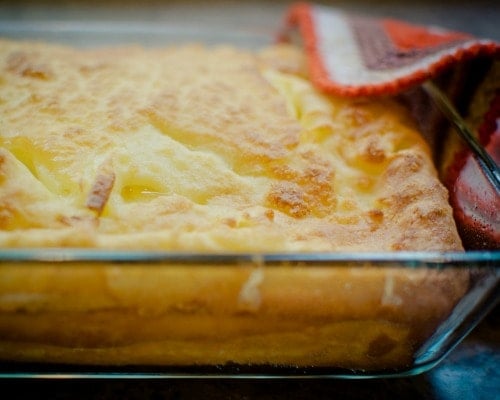
What you should consider
Price Factor: Low-Medium
Safe for: Oven
The Good
- Excellent heat conduction
- Doesn’t react with any foods
- Cook and store directly in fridge
- Low cost
- Transparent – can see food easily
Potential pitfalls
- Not recommended for high temperatures
- Not suitable for broiling
- Temperature doesn’t distribute well
- Relatively easy to break
Non-Stick
Hard-anodized nonstick pots and pans are a brilliant option thanks to their price, durability, and anti-stick surface. Even foods that are notorious for sticking, like eggs, slide off effortlessly.
When cooking stir-fries and other dishes on high heat, watch that you don’t damage the coating. Some brands don’t handle excessive heat well. Check the manual to work out what your new cookware can handle.
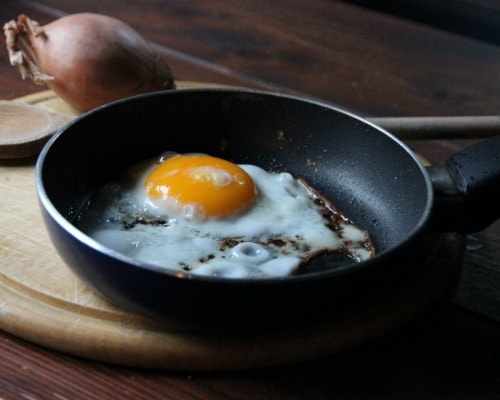
What you should consider
Price Factor: Low-mid range
Safe for: Stovetop and some pans are suitable for ovens.
The Good
- Easy to wash
- Even the stickiest foods don’t stick
- Cook with less fat
- Doesn’t react with certain foods
Potential pitfalls
- Can’t use metal utensils when cooking
- High heat can damage the non-stick coating
- Cheap pans tend to have a short lifespan
Enamel
Although enamel cookware may not provide the luxurious look that copper offers, it is still a popular option in many households. Depending on the brand, enamel often comes in a wide array of colors and designs. Whether your kitchen has an old-fashioned homestead look to it, looks bohemian, or has a Hollywood glam, there’s a set that’ll fit your look.
Enamel cookware offers the benefits of cast iron, but you don’t have to worry about the maintenance. If you love slow cooking with tomato bases, then enamel is a good option as it doesn’t react with acidic ingredients.
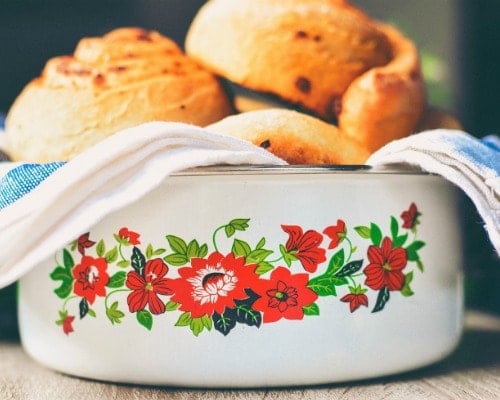
What you should consider
Price Factor: Mid-range
Safe for: Oven and stovetop
The Good
- Maintenance such as seasoning isn’t required
- Durable – you’ll get years out of your purchase
- Looks impressive – color coordinate your kitchen!
- The coating is non-reactive
Potential pitfalls
- Doesn’t have a non-stick coating
- More expensive than cast iron
Silicone
Silicone is an excellent option when baking foods like cakes, muffins, and bread. This material is flexible, making it easy to turn out baked items on a wire rack without a lot of headaches. Savory dishes like meatloaf are also perfect for cooking in silicone molds.
Silicone bakeware comes in a wide range of colors, so finding a design that suits your kitchen shouldn’t be difficult.
Keep in mind that molds with intricate patterns can be time-consuming to clean. You’re best to stick with simple cake and muffin shapes if this is something you want to avoid.
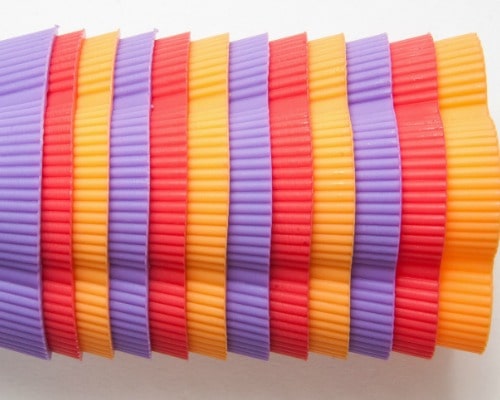
What you should consider
Price Factor: Low
Safe for: Oven
The Good
- Easy to turn our baked food without it sticking
- Lightweight and simple to store
- Relatively low cost
Potential pitfalls
- Not overly durable
- Can be fiddly to clean

Best Cookware Brands
You’ll discover there is a fantastic range of cookware on the market, but it can be daunting trying to pick the right set. We’ve narrowed it down to our 6 top brands. They are experienced manufacturers of cookware and have built a reputation for producing products that deliver.
Cuisinart

Price: Middle of the road
Best for: Ceramic, stainless steel, nonstick

Price: Middle of the road
Best for: Non-stick

Price: Mid-high
Best for: Ceramic, non-stick, and enamel

Price: High
Best for: Stainless steel, copper, non-stick.

Price: Low
Best for: Non-stick, stainless steel

Price: Mid-high
Best for: Cast iron, stainless steel, non-stick, enamel
Summing Up
If it has been several years since you last invested in a new cookware set, you may be in for a surprise. Innovation has led to some impressive technology that provides lightweight, easy to clean, non-stick pots and pans.
There are still traditional options like copper and cast iron that have stood the test of time. Remember to keep them maintained and you won’t be disappointed.
For most of us, cookware is equipment that will get used regularly. Like a quality knife set or stand mixer, paying extra for the best pots and pans sounds like a big up-front cost. But with this investment comes the benefit of quality cookware that will serve you for many years and will help make better food.
Good luck with your search for the best cookware. If you’ve stumbled onto an amazing new product get in contact and let us know.


Leave a Reply